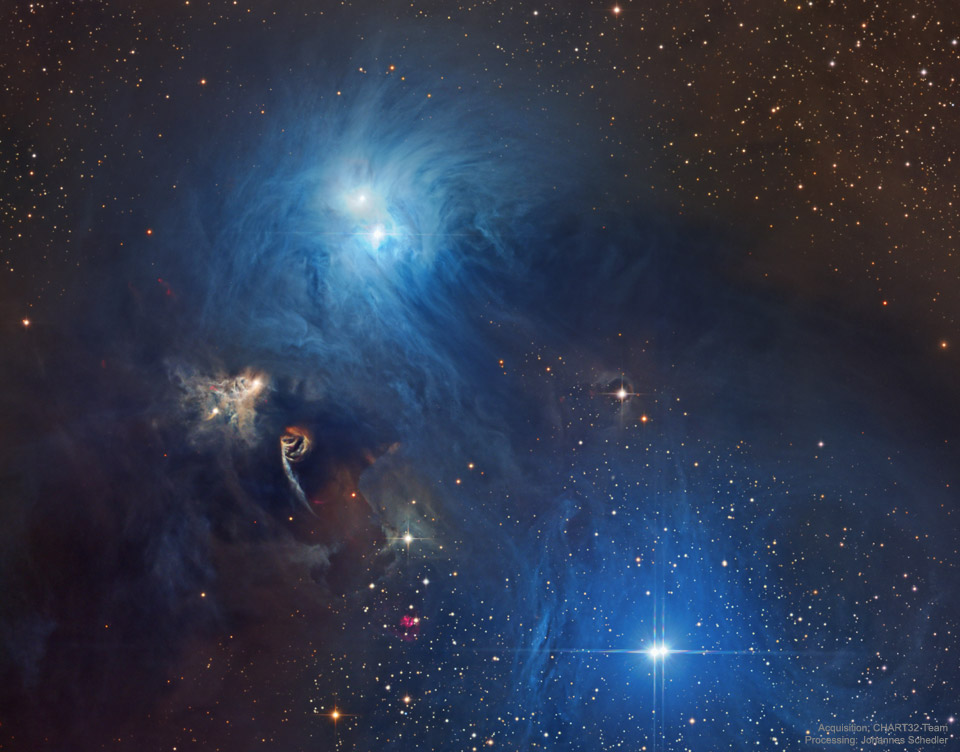https://en.wikipedia.org/wiki/Star_formation wrote:
<<Star formation is the process by which dense regions within molecular clouds in interstellar space, sometimes referred to as "stellar nurseries" or "star-forming regions", collapse and form stars. Star formation theory, as well as accounting for the formation of a single star, must also account for the statistics of binary stars and the initial mass function. Most stars do not form in isolation but as part of a group of stars referred as star clusters or stellar associations.
If a cloud is massive enough that the gas pressure is insufficient to support it, the cloud will undergo gravitational collapse. The mass above which a cloud will undergo such collapse is called the
Jeans mass.
The Jeans mass depends on the temperature and density of the cloud, but is typically thousands to tens of thousands of solar masses. During cloud collapse dozens to ten thousands of stars form more or less simultaneously which is observable in so-called embedded clusters. Turbulence is instrumental in causing fragmentation of the cloud, and on the smallest scales it promotes collapse. The end product of a core collapse is an open cluster of stars.
In triggered star formation, one of several events might occur to compress a molecular cloud and initiate its gravitational collapse. Molecular clouds may collide with each other, or a nearby supernova explosion can be a trigger, sending shocked matter into the cloud at very high speeds. (The resulting new stars may themselves soon produce supernovae, producing self-propagating star formation.) Alternatively, galactic collisions can trigger massive starbursts of star formation as the gas clouds in each galaxy are compressed and agitated by tidal forces. The latter mechanism may be responsible for the formation of globular clusters.
As it collapses, a molecular cloud breaks into smaller and smaller pieces in a hierarchical manner, until the fragments reach stellar mass. In each of these fragments, the collapsing gas radiates away the energy gained by the release of gravitational potential energy. As the density increases, the fragments become opaque and are thus less efficient at radiating away their energy.
During the collapse, the density of the cloud increases towards the center and thus the middle region becomes optically opaque first. This occurs when the density is about 10
−13g/cm
3 [~1 M
☉ within a ~100 AU "solar system" radius]. A core region, called the First Hydrostatic Core, forms where the collapse is essentially halted. It continues to increase in temperature. The gas falling toward this opaque region collides with it and creates shock waves that further heat the core. The dust within the cloud becomes heated to temperatures of 60–100 K, and these particles radiate at wavelengths in the far infrared where the cloud is transparent. Thus the dust mediates the further collapse of the cloud.
When the core temperature reaches about 2000 K, the thermal energy dissociates the H
2 molecules. This is followed by the ionization of the hydrogen and helium atoms. These processes absorb the energy of the contraction, allowing it to continue on timescales comparable to the period of collapse at free fall velocities. After the density of infalling material has reached about 10
−8g/cm
3, that material is sufficiently transparent to allow energy radiated by the protostar to escape. The combination of convection within the protostar and radiation from its exterior allow the star to contract further. This continues until the gas is hot enough for the internal pressure to support the protostar against further gravitational collapse—a state called hydrostatic equilibrium. When this accretion phase is nearly complete, the resulting object is known as a protostar.
Accretion of material onto the protostar continues partially from the newly formed circumstellar disc. When the density and temperature are high enough, deuterium fusion begins, and the outward pressure of the resultant radiation slows (but does not stop) the collapse. Material comprising the cloud continues to "rain" onto the protostar. In this stage bipolar jets are produced called Herbig–Haro objects. This is probably the means by which excess angular momentum of the infalling material is expelled, allowing the star to continue to form.
When the surrounding gas and dust envelope disperses and accretion process stops, the star is considered a pre-main-sequence star (PMS star). The energy source of these objects is gravitational contraction, as opposed to hydrogen burning in main sequence stars. The PMS star follows a
Hayashi track on the Hertzsprung–Russell (H–R) diagram. The contraction will proceed until the Hayashi limit is reached, and thereafter contraction will continue on a Kelvin–Helmholtz timescale with the temperature remaining stable. Stars with less than 0.5 M
☉ thereafter join the main sequence. For more massive PMS stars, at the end of the Hayashi track they will slowly collapse in near hydrostatic equilibrium, following the
Henyey track.
Finally, hydrogen begins to fuse in the core of the star, and the rest of the enveloping material is cleared away. This ends the protostellar phase and begins the star's main sequence phase on the H–R diagram.
The stages of the process are well defined in stars with masses around 1 M
☉ or less. In high mass stars, the length of the star formation process is comparable to the other timescales of their evolution, much shorter, and the process is not so well defined. The later evolution of stars are studied in stellar evolution. Complicating this picture of a collapsing cloud are the effects of turbulence, macroscopic flows, rotation, magnetic fields and the cloud geometry. Both rotation and magnetic fields can hinder the collapse of a cloud.>>
 Stars and Dust in Corona Australis
Stars and Dust in Corona Australis




